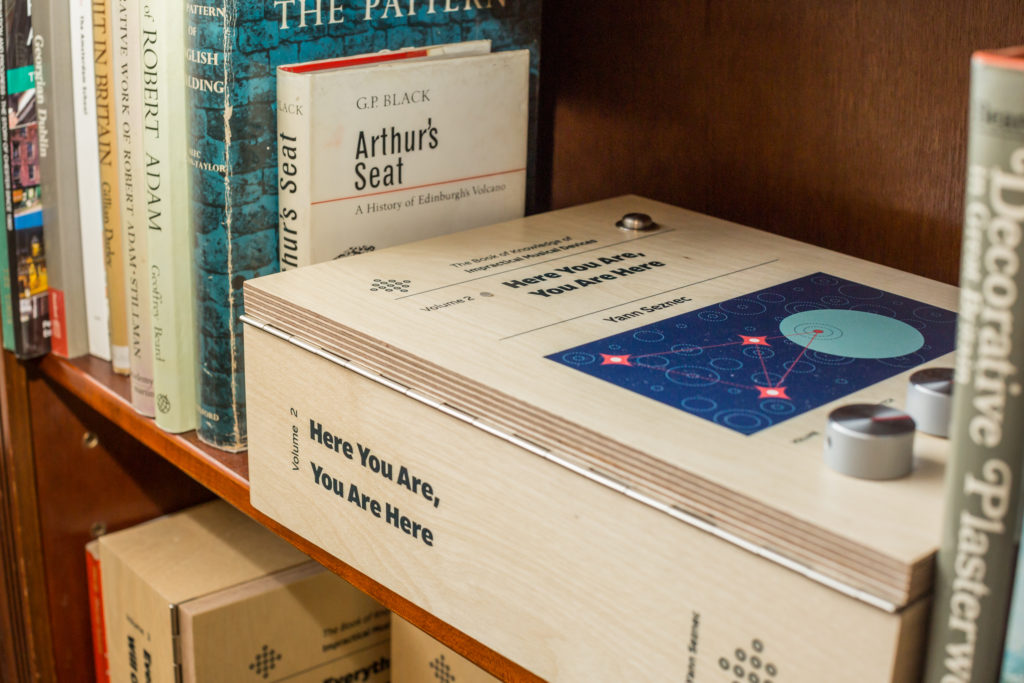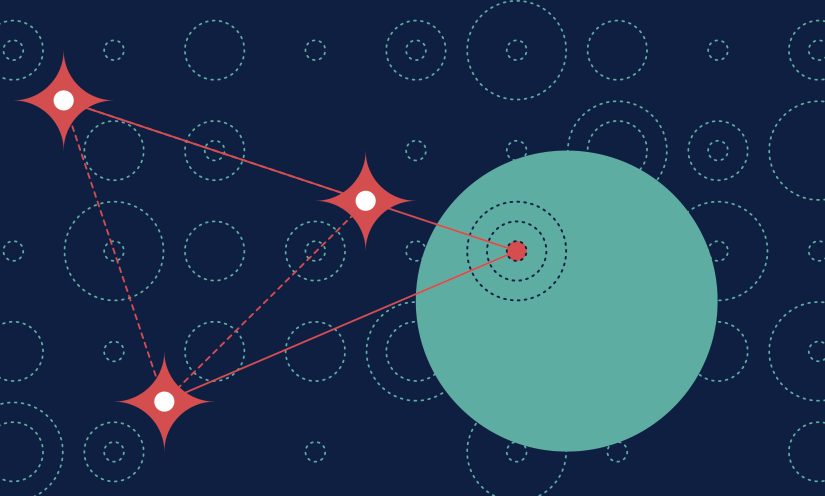It is an instrument by means of which the centre-point of three points of unknown position, lying on the surface of a sphere, may be precisely determined.
al-Jazari
This is a very simple instrument and the text serves mainly to emphasise the rudimentary nature of al-Jazari’s mathematical knowledge, when compared with his engineering skills.
Donald R. Hill
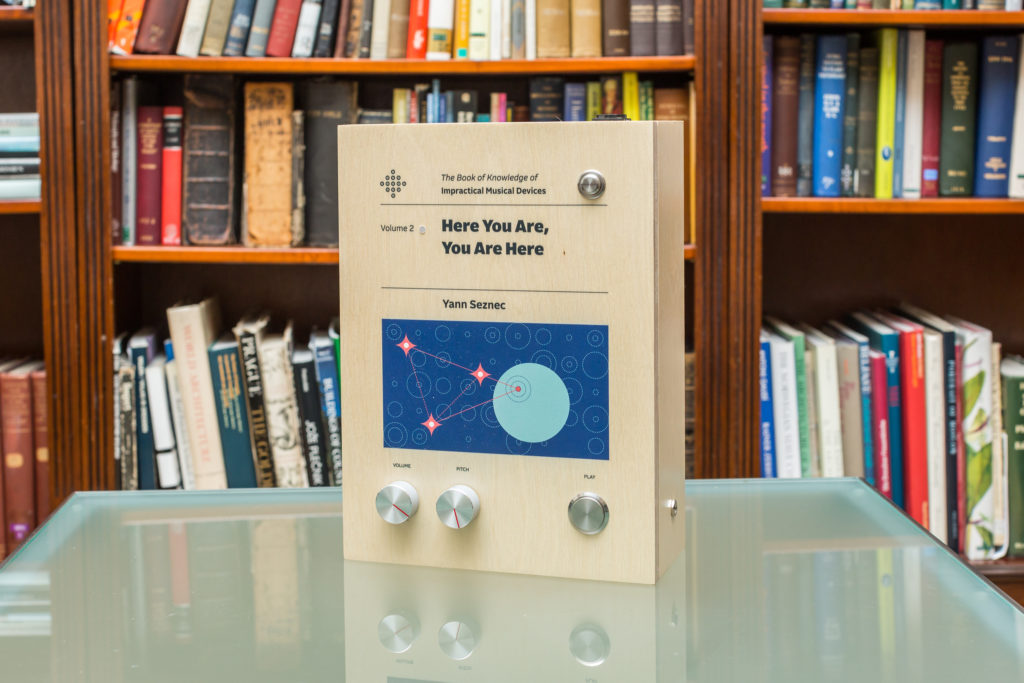
I’ll be leaving soon. I’ll be moving away from a place where I’ve lived for twelve years, a place where all of the most important events of my life so far have occurred. But I can’t seem to remember things in terms of time. I can’t recall a moment and live through it again, instead I might consider that a trip to the post office took forever, or that my nieces grew up so fast, or my train journey takes 65 minutes if all goes well. These memories are formed from a set of fragments which are reassembled and cross-referenced with knowledge that I can reasonably assume to be true. If I get my regular train it usually gets in at 9:34, and I know I went to Dundee this morning because it’s Monday and I teach on Mondays so that’s how long I was on the train today. I was born in late 1982 and I grew up and I’ve lived in a few different places and my class pet in third grade was a turtle named Logo and at some point my sister taught me to make pancakes and now it’s mid 2019 so I must be 36.
Sound, on the other hand, is the perfect illustration of time. The vibrations that stimulate our ear drums need to happen in the precise order and at the precise rate at which they were created in order to have any meaning. When you listen to a recording you are accepting the illusion of re-experiencing and re-living a particular piece of time. Listening to something places a demand on our time, but in return you are in the studio with John Coltrane or on the moon with Neil Armstrong or in your living room as your child plays the piano. It’s happening again and you can listen to it and inhabit it at the same rate at which it first happened and perhaps in some way it means that you are there.
And so listening to a recording is an out-of-body experience – it breaks our relationship with our memory. We can listen to a sound again and again, each time forging connections between a vast set of individual moments and feelings and assumptions that swirl like a sandstorm in our minds, the granulated particles from a boulder of lived experience. Twelve years.
Granular synthesis starts from the premise of creating grains of sound from a recording, breaking an audio source into thousands a tiny pieces, each entirely unrecognisable on their own but when reconstituted create an imperfect but malleable simulacrum of the original whole. We are barely able to perceive a single grain of sound lasting just a few milliseconds – we might hear a pitch, or perhaps a timbre, but it will only gain context when played simultaneously alongside thousands of other near-identical grains.
There is a frightening power in this. Digital granulation techniques give us the previously unheard of ability to play a sound at a different pitch without changing the time, or change the time without changing the pitch. We can randomise different settings, make a sound play in a non-linear way, or pause a sound to just play a cloud of grains within a window of time, creating a whirling storm of sonic snippets dancing around our ears. The tyranny of time is overthrown, only to be replaced by something terrifyingly similar to our own consciousness.
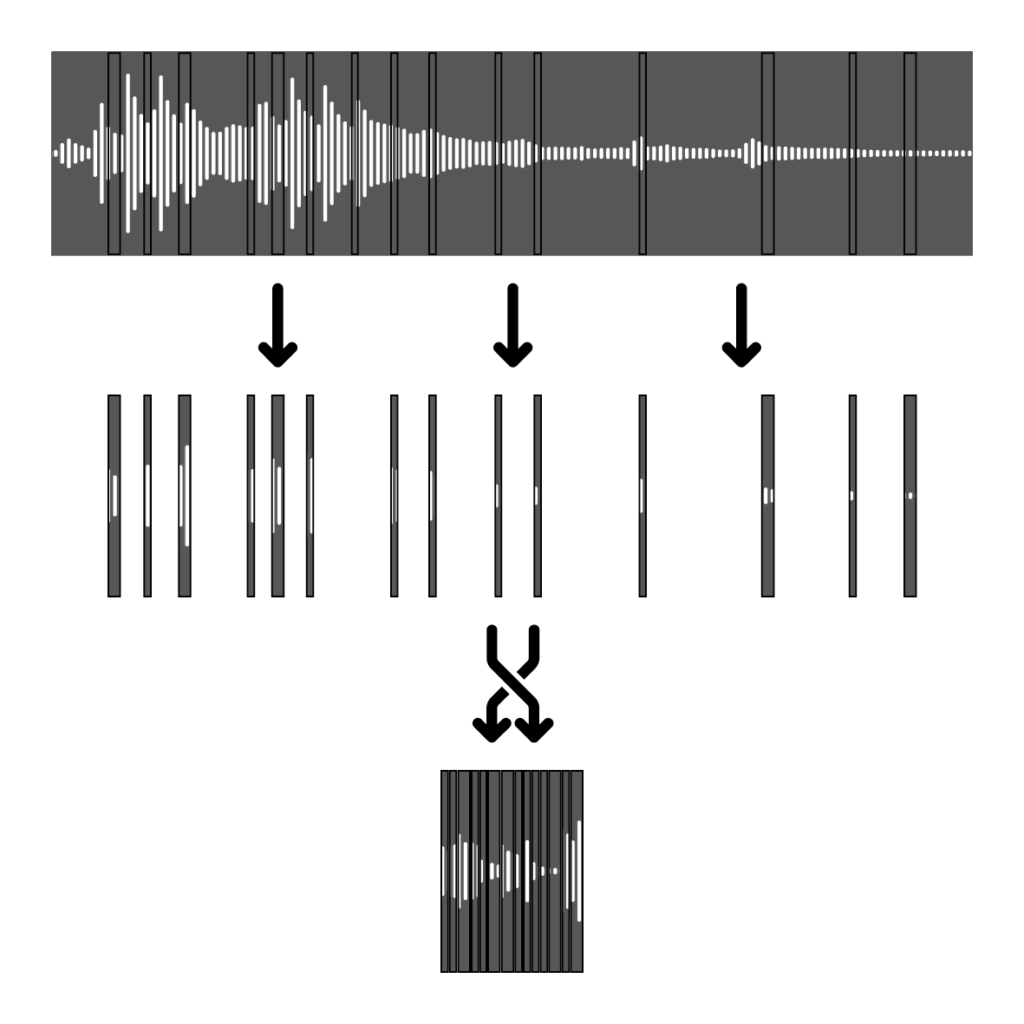
And so sound is no longer time. With granular synthesis we gain control over time, we can travel from start to finish at whatever rate we like, making stops along the way. We are no longer in thrall to a recording, as it no longer needs to represent our only tenuous link to an objective representation of time. Instead we have a system that taps directly into our natural methods for recalling and replaying memories, reassembled from a set of momentary fragments and replayed at whatever speed and pitch that seems suitable for the occasion. A deeply frightening experience can be retold as a light comedy, a traumatic childhood moment can be recast as a formative episode, a single note on a piano can be played back over twelve minutes or twelve hours or twelve years.
This power is an illusion. You can launch Ableton and play twenty audio clips simultaneously and the software will use sophisticated (and obscure) granular techniques to match their timing and play them all in sync. It’s easy, the decisions have been made for you, it will play at 120bpm and you don’t need to worry or concern yourself with the minutiae of how it works or why the decisions were made. We don’t need to worry about where our clothes come from or how our food was prepared or how our car works or what our music will sound like, these things are smooth and automated and frictionless and require minimal engagement and the consequences are invisible. With great power comes great indifference. The inherently time-based nature of sound is removed, but the potential freedom this offers is problematic and functions only to ease my mind, giving me some temporary and illusory solace about the role of time in my life.
This is an instrument that forces me to explore my memory not through the medium of time, which has been shattered and fragmented digitally in the same way as it has been mentally, but through space. In any given location I can listen to a single moment, frozen in time, like a sonic photograph permanently fixed to a spot in the ground. But in order to hear the rest of the sound, the rest of these sonic photos, I must travel. It has been scattered around the world.
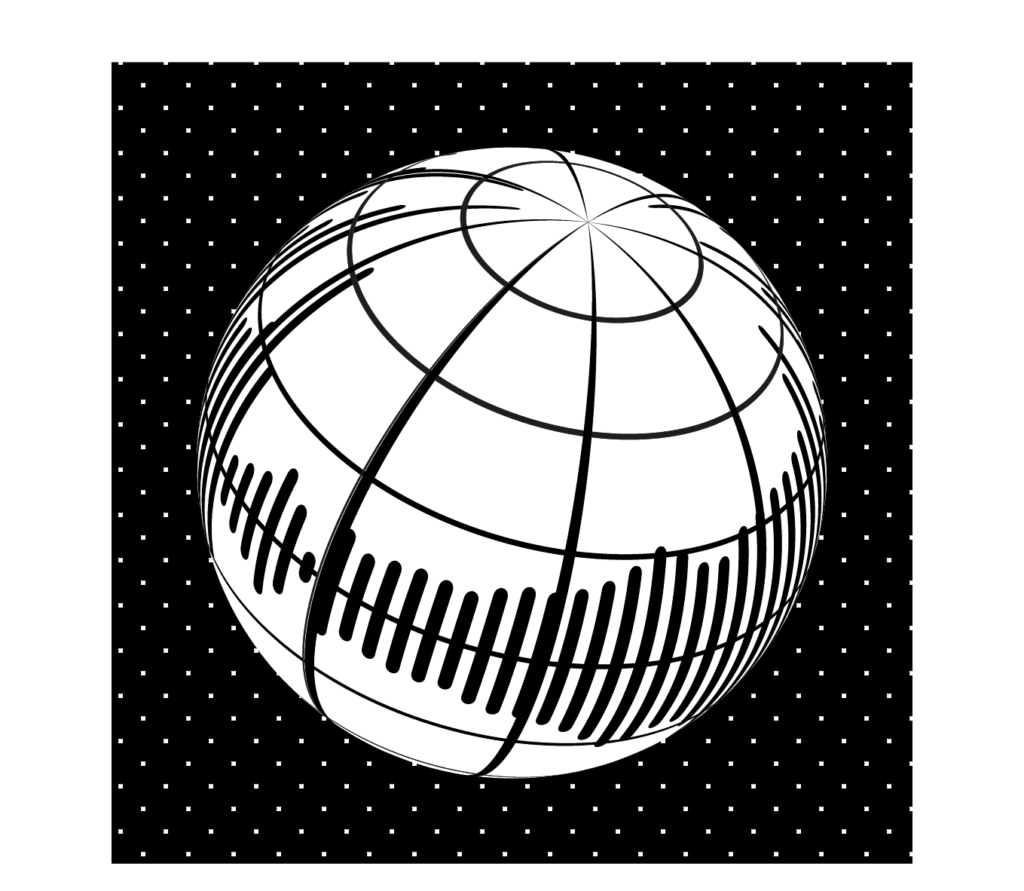
Playing this instrument is about forcing a new restriction on myself to check the power that granular synthesis offers me. This single restriction – the location in the sound that I’m hearing is dependant on where I am in the world – itself leads to a number of other design constraints and opens a set of uncomfortable questions. This is, though, a project about uncomfortable questions, so this is a good place to be.
In order for a GPS sensor to get a fix on my location it needs to be in view of at least three satellites (location, location, location). This in itself led to two decisions: the instrument should be silent if no location is identified, and it needs to be battery powered in order to be fully mobile. There is therefore a magical and humbling moment whenever I use this instrument, particularly if I switch it on inside. With no line of sight to a satellite there is only silence. Stepping outside the instrument will begin to play, which is a lovely moment tempered by the realisation that this is possible only because it means that at least three satellites are above us, and they’ve been up there all this time, and we no longer live in a world of silence but in a world governed by unseen objects orbiting above our heads sending and receiving signals (or worse).
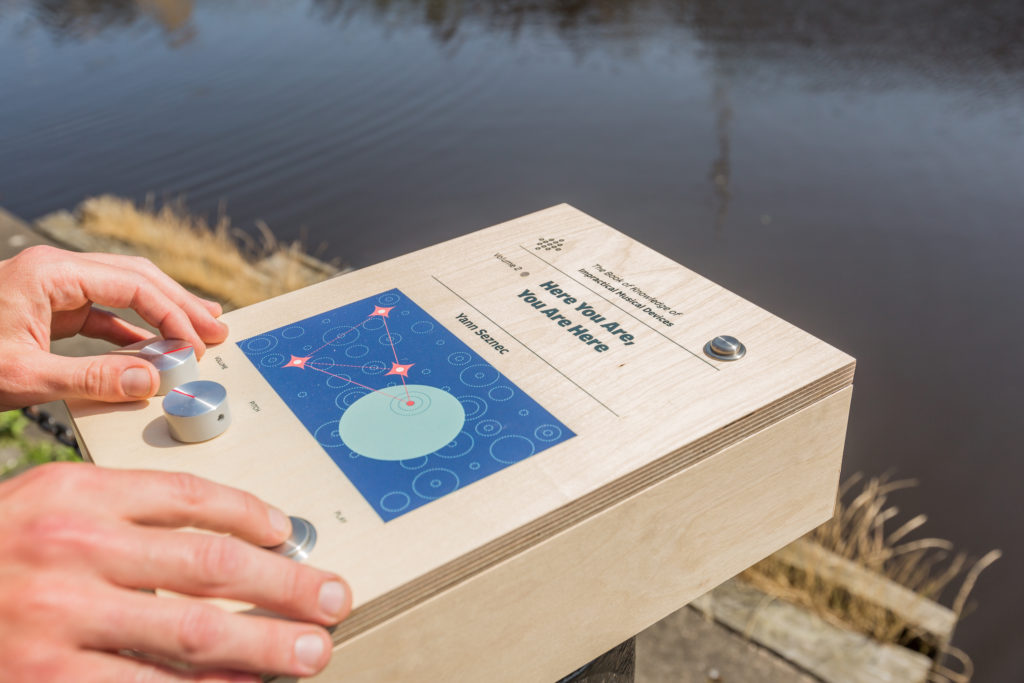
And the sound doesn’t change. I’m stuck in a place in the sound, and I have to travel to hear it. I have to travel to do most things. I have to travel to my studio to build these instruments, I have to take a train to go teach to help pay for child care costs, I fly to see my family or play a show or go to a funeral or start a new job. Life, work, death, family; the spectre hovering over all of these things is the necessity for travel.
As I travel I am moving through the sound and moving through my memory, free from the confusing burden of time. The grains scatter around me, I leave them behind as I walk down the road or sit on the bus. I become hyper aware of where I am and where I have been for the last twelve years. On a street corner where my wife took me out for dinner on my birthday eight years ago I hear the tail of a piano chord, transformed into a rich ambience built from a cluster of overlapping 20 millisecond sounds, with slight randomness because memories are never built from a single moment.
I sit on the train listening to the sound transform slowly, the pulsing signals from space telling me where I am and working through the recording of my children sitting on the piano bench exploring the keys. This memory is jumbled and granulated, rebuilt like a set of sandcastles on a beach waiting for me to walk past.
There are sandcastles I will never see; moments in the sound and combinations of granular settings that will be generated in locations I will never visit. I would need to travel the whole world to hear every combination of grains, to hear every location in the sound. It feels good to know that I can’t do that. Taking that option away frees me from my own memory. I don’t want to hear every part of the sound, I don’t need to re-experience every grain. Along the way some will be lost, falling to the bottom of the sea to rest until my planet is engulfed in the sun and all is returned to the universe.
